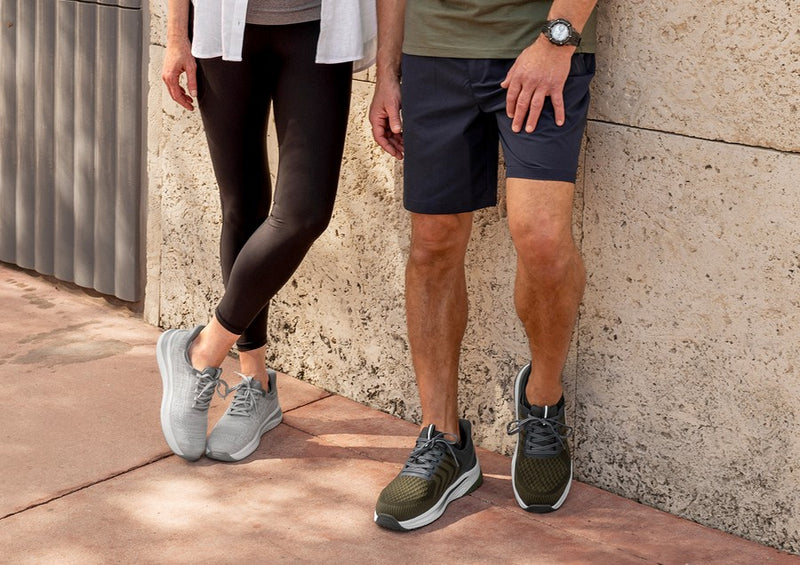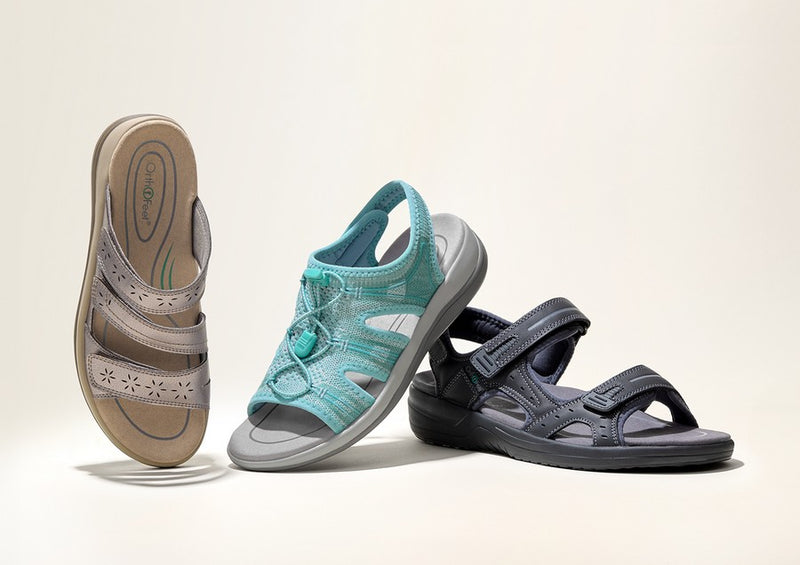Hammer Toe vs. Mallet Toe vs. Claw Toe - What's the Difference?
By Steven Gershman DPM / February 18, 2024 Blog HomeThis article will begin with an exploration of the anatomy and definitions of hammertoes, mallet toes and claw toes. It will then delve into the causes of these deformities, their effects, and conclude with information on managing the associated problems.
But before diving in, let's start with some basic anatomy.
Human toes, excluding the big toe, typically consist of three bones connected by two joints, much like fingers. The big toe, on the other hand, has only two bones connected by a single joint, akin to the thumb.
Now, let's explore what exactly is a hammer toe, a mallet toe and a claw toe.
What is a hammer toe?
A hammer toe is a deformity where the first joint of the toe is contracted, causing the end of the toe to bend downward, resembling a hammer.
What is a mallet toe?
A mallet toe is a deformity at the second joint (on all but the big toe) where the end of the toe is contracted or bent downward.
What is a claw toe?
A claw toe is a deformity of both toe joints (on all but the big toe) where the two joints are contracted, causing the entire toe to bend or curve downward, appearing as a claw.
Common additional deformity
In all three deformities, there can also be an additional deformity at the joint connecting the toe to the foot (metatarsal-phalangeal joint), where the joint is contracted, causing the first bone to elevate. This creates a more involved and complicated deformity.
Causes
The most common cause of these deformities is abnormal mechanics of the foot joints, leading to overuse of the muscles in the lower leg that attach to the toes. These muscles serve as stabilizers of the foot, attempting to correct imbalances resulting from factors such as congenital conditions, ill-fitting shoes, or diseases like arthritis. When these muscles overwork as stabilizers, they exert excessive pull on the toes, eventually resulting in permanent contracture or tightening of the associated tendons.
Overworking of the flexor muscles and tendons on the bottom of the foot leads to abnormal pulling on the toes, resulting in hammertoes, mallet toes, and claw toes. The specific deformity that develops depends on the complex interaction between the short and long flexors of the toes.
Similarly, overworking of the extensor muscles on the top of the foot can cause tightening and contraction, resulting in elevation of the toe at the metatarsal-phalangeal joint that connects the toe to the foot. This elevation exacerbates conditions such as hammer toe or claw toe, leading to a more severe deformity.
Issues that result from these deformities
Toe deformities can cause a myriad of problems, especially when wearing women's or dress shoes. Hammertoes and claw toes, particularly when the toe is also elevated, can rub inside the toe box of the shoe, resulting in irritation, painful calluses or corns (a corn is essentially a hard callus), and sometimes ulcers or wounds at the top of the toe.
Mallet toes often lead to corns at the tip of the toe, which can be quite painful.
Treatment
Shoes play a crucial role in managing these deformities. A deep wide toe box is the most important aspect of proper shoe gear. The toe box should be high or deep to minimize rubbing on the top of the deformed toes. A wide toe box is especially helpful for deformities affecting the big toe and small toe.
Since mechanical issues cause overuse of the lower leg muscles, resulting in contraction of the tendons to the toes, shoes once again become important. Well-made, stable shoes with supportive insoles are crucial. The more supportive the shoes and insoles, the less strain the muscles and associated tendons have to endure, reducing the likelihood of worsening the deformities and their effects. In addition, heels should be low to the floor, as elevated heels tend to stress the toes.
Orthofeet's solution
Orthofeet shoes are well-designed for most toe deformities. They feature wide, deep toe boxes that reduce rubbing on the toes. For severe cases, there are stretchable fabric shoes that are flexible and can accommodate even the most severe deformities.
Orthofeet shoes are also designed for stability, aiming to reduce the overuse of the muscles that pull on the toes. The insoles are supportive and the shoes are deep enough to allow for orthotics, if needed, for additional support.
In severe cases, surgery may be required for toe deformities. However, proper shoes offer the best chance to avoid surgery and provide comfort with toe deformities. Orthofeet shoes are well-suited for this purpose and may be the most comfortable shoes you ever wear.


